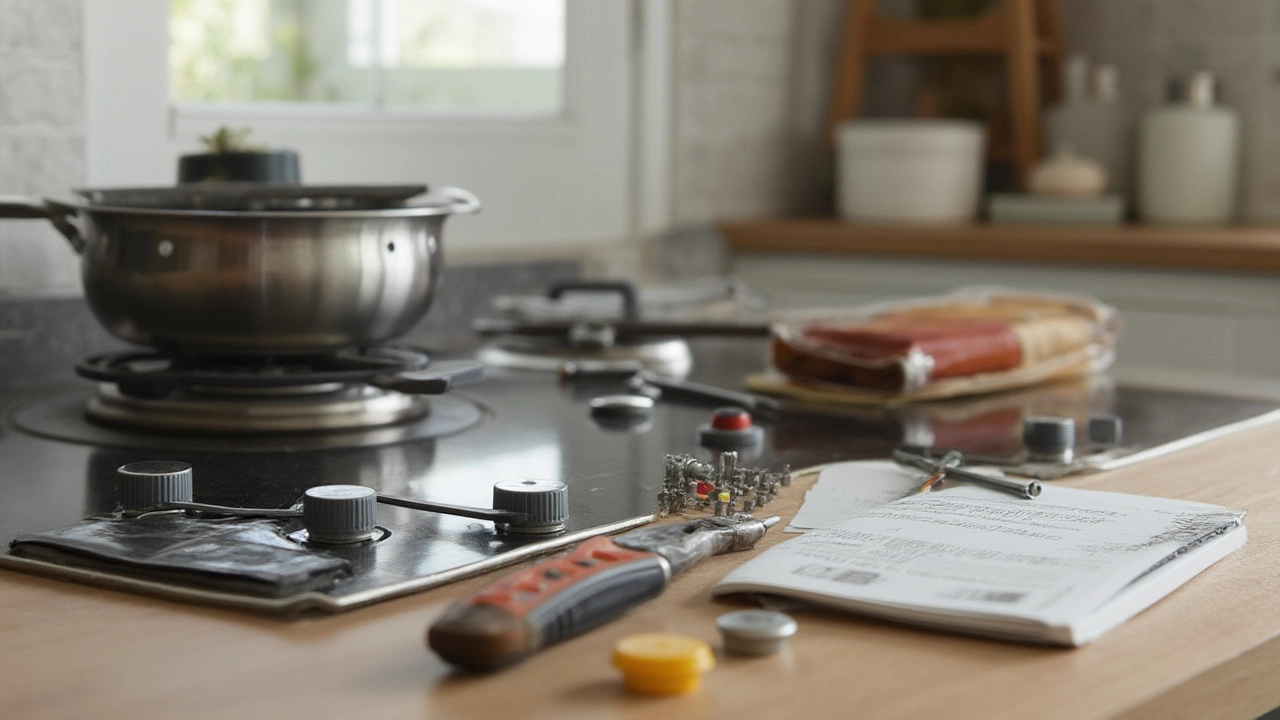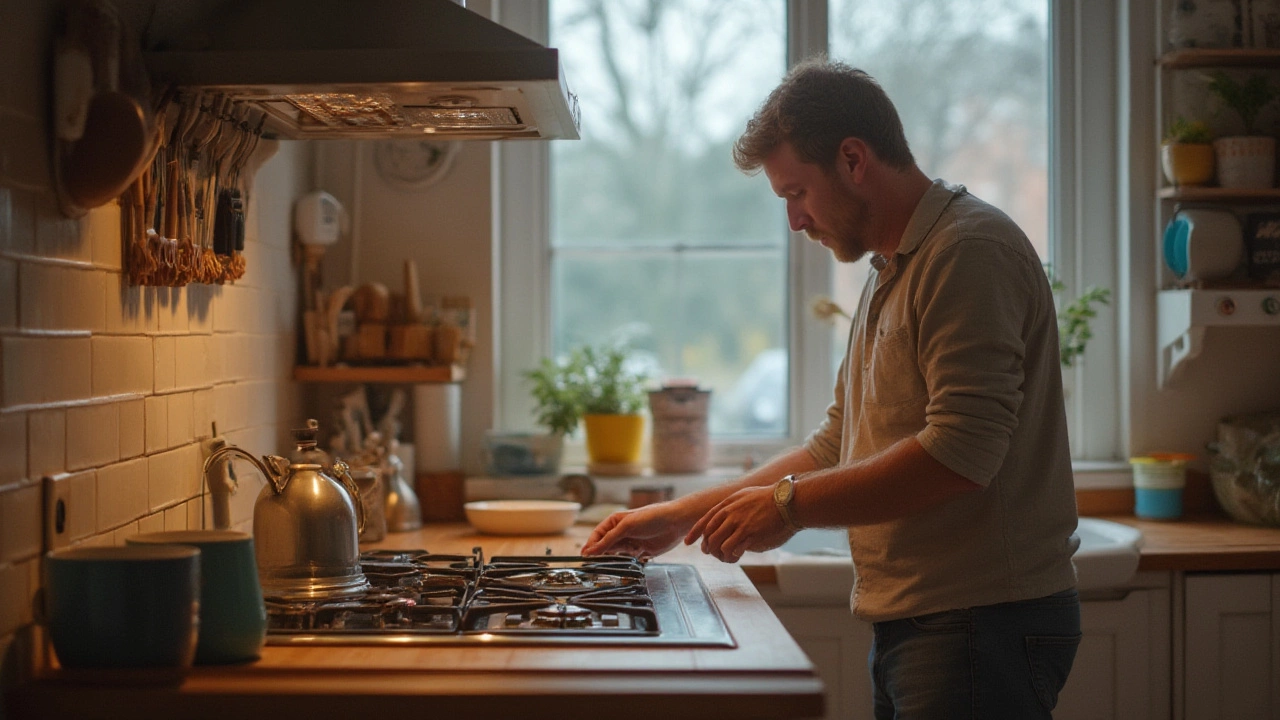Ever gone to make a late-night cup of tea, flicked on your electric hob, and realised it just won’t heat up? There’s this strange moment of panic—will dinner be cereal now? Hobs have a habit of acting up at the worst possible times, right when you’re planning a roast or prepping curry night. The question buzzing around every frustrated kitchen is, can hobs actually be repaired, or is it time to reach for your wallet?
Hob Faults: What Usually Goes Wrong?
Let’s get right into the nuts and bolts of what goes wrong with hobs in New Zealand homes. Whether you’re dealing with a traditional electric coil, a glass-ceramic electric hob, an induction beauty, or a classic gas model, these handy appliances deal with a heap of wear and tear. People lean on them daily for coffee, eggs, and everything in between, so it’s hardly shocking that faults pop up. The most common hob troubles are simple: rings not heating, only some burners working, lights flickering, clicking noises, stubborn igniters, or weird smells. Sometimes, a child lock gets stuck on, or the glass top randomly cracks. Sound familiar?
Take electric hobs: they’re notorious for elements burning out. If one ring just won’t heat—but others are fine—chances are the element or the hob’s switch is toast. Induction hobs have their own gremlins. Sometimes, they refuse to detect pans, show error codes, or fail to switch on, which can drive you mad if you just bought new cookware. Inductions have smart sensors, fans for cooling, and touchpads that can stop responding if moisture seeps in. Gas hobs? Different issues—igniters not sparking, gas failing to light, or a low flame. These often start after cleaning spills or dropping pasta water into the controls. Fun fact: clogged burner holes and dirty igniters cause roughly 60% of gas hob complaints in Kiwi homes, according to a 2023 consumer survey by Consumer NZ.
It’s not all doom and gloom, though. About 80% of common hob faults reported in New Zealand can be repaired. The crazy part is that a lot of breakdowns happen because of small, fixable problems: worn knobs, sticky switches, dirty electrodes, or blown fuses. Sometimes, a circuit breaker has just tripped and needs a reset. But when control boards or power supply wiring are fried, it gets pricier. Repairs can make sense for most faults under $300. Some luxury hobs—say, Smeg or Fisher & Paykel with fancy touch controls—may cost more to fix, but replacement is usually the last resort if the glass cracks badly or parts are no longer available.
| Hob Type | Most Common Fault | Repair Success Rate |
|---|---|---|
| Electric Coil | Busted element | 90% |
| Ceramic/Glass Electric | Faulty switch | 85% |
| Induction | Touchpad error | 75% |
| Gas | Igniter won't spark | 92% |
You’ll almost never need to bin an entire hob just because one ring died or the igniter stopped sparking. There’s a universe of spare parts in New Zealand for common brands like Bosch, Westinghouse, and Electrolux, with delivery as fast as next morning in big cities like Auckland or Christchurch. For niche brands from overseas, though, repair can take longer if the part has to be shipped.

DIY vs. Professional Repair: What’s Sensible and Safe?
It’s tempting to grab a screwdriver and poke around under your hob, but slow down! There are some fixes you can do yourself—and others that are best left for trained appliance engineers. Let’s be real: hobs aren’t just toasters with fancy knobs. There’s high voltage coursing behind the dials, gas flowing through delicate lines, and enough electronics to boggle most minds.
If your electric hob just stopped working after a power cut, check if the safety fuse tripped at your mains. If it’s a simple plastic knob that’s snapped, many are a straightforward pop-off, pop-on fix. But for trickier jobs, especially those involving wiring or glass panels, leave it to the pros. Even seasoned DIY-ers risk a nasty shock or, worse, a kitchen fire. In New Zealand, it’s against the law for anyone except a registered electrician to open up and repair most fixed electric hobs. It’s not worth risking your safety, and it could void your house insurance if you muck up the wiring.
Gas hobs are another can of worms. The most you should do is clean dirty burners or change out a knob. If the problem is with ignition or gas flow, or if you even suspect a gas leak, step away and call a registered gasfitter. There’ve been incidents in Auckland where DIY gas hob repairs led to carbon monoxide leaks, setting off smoke alarms in the wee hours—no one needs that, trust me.
That said, keeping your hob working well boils down to simple, regular care. Here are a few life-saving tips:
- Clean up spills straight away—don’t let liquids seep under the controls.
- Use a damp cloth, but avoid harsh scourers on glass or touch panels—they scratch easily.
- For gas hobs, check burners aren’t clogged and igniters are free of food residue.
- If an electric hob ring stays cold, try another pot. Sometimes it’s the base of the pot at fault—not the hob.
One often-overlooked tip: check your owner’s manual. Even if you lost the paper copy, a quick web search for your model number plus ‘manual PDF’ nearly always works. Modern hobs have built-in diagnostics—error codes that can clue you in to what’s wrong, or let a pro fix it faster. It’s smart, not lazy, to call out a technician before you make things worse and void any warranty you’ve got left.

When Is It Worth Repairing Your Hob?
Alright, so your hob is on the blink—how do you decide whether to fix it or replace it? First thing to check: is the hob under warranty? Most new appliances in New Zealand have a two-year manufacturer’s warranty, though some brands stretch this to five years. If you’re in this window, call the appliance brand or retailer directly, and they’ll send the right repair expert. Major faults are usually covered, and you’ll just need your proof of purchase handy.
If the hob’s a few years old and out of warranty, weigh up the cost of repair. According to FixIt, a major nationwide appliance repair service, the average repair bill for a standard hob in 2024-2025 was $210 (labour and parts). That’s cheaper than a new mid-range electric or induction hob, which typically goes for $650-$1,200 installed, and makes repair a solid deal, especially if everything else is working.
Replacement makes sense only when:
- The glass top is totally shattered (repair costs can match a new unit for cracked glass).
- Spare parts are discontinued and impossible to get locally.
- The wiring has burnt internally, and repair quotes push over half the price of a new hob.
- The hob is over ten years old and inefficient—or you want to upgrade to induction for energy savings. Newer induction models use 30% less power, according to EECA (Energy Efficiency and Conservation Authority NZ).
One more thing: never ignore repeat faults like sparks, burning smells, or breakers that keep tripping when your hob’s on. These mean there’s a deeper problem—sometimes loose wiring or insulation damage. That’s a real safety hazard, and you should switch off your hob at the wall and get help ASAP.
A few simple upgrades and repairs can prolong your hob’s life. Replacing knobs, switches, or a single element is usually affordable and quick. Many Aucklanders have kept hobs running smoothly for 15 years with just the odd part swap every few years. Don’t fall for the myth that kitchen appliances are disposable—most hobs are fixable, especially if you act fast. Keep them clean, don’t ignore small issues, and get the pros involved when it’s electrical or gas-related. You’ll get years more bacon, eggs, and good memories without breaking the bank.
Next time your hob plays up, don’t panic. Check for obvious issues—loose wires, stuck locks, dirty burners—and if in doubt, call a qualified technician. Hobs don’t give up easy, and neither should you. Just keep the fire extinguisher handy, just in case.


